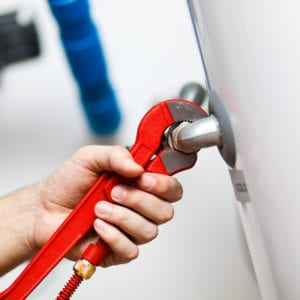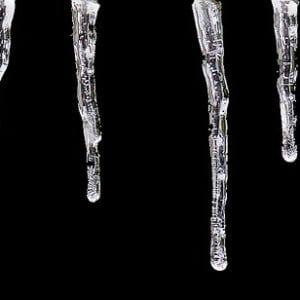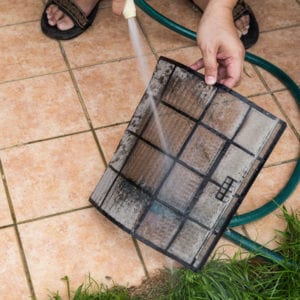Water Heater Problems? 4 Early Warning Signs to Watch For
Has your water heater done something odd lately? This appliance is usually the last thing on a homeowner’s mind, but strange sounds, not enough hot water and mysterious leaks are hard to ignore. These are among the warning signs you should watch for to prevent bigger water heater problems in the future.
Read on to learn about water heater sounds, leaks, pilot light issues, and circuit breaker problems.
Warning Signs of Water Heater Problems
When our team answers calls for water heater repair in the Greater Toronto Area, we often find that the homeowner noticed at least one red flag beforehand. These are some of the most common warning signs of water heater problems:
- Loud knocking/popping/banging sounds, which indicates a layer of sediment at the bottom of the tank.
- Pilot light that won’t stay lit, usually because of a defective thermostat, thermocouple, or pilot tube.
- Leaks from the top of the tank (a minor issue) or bottom of the tank (much more serious)
- Circuit breaker tripping when the water heater is in use due to electrical issues.
- Not enough hot water for a shower
Most of these issues are minor if dealt with early on. However, they can lead to more serious water heater problems if not addressed.
We’ll look at each of these issues in more detail below.
1. Water Heater Making a Knocking, Banging, Popping Noise
It can be alarming to hear sudden pops and bangs coming from inside the water tank. Why would a water heater make knocking noises when there isn’t there anything but water in there?
Fortunately, the cause of the popping noise is not something serious. The sound you hear is most likely the sound of steam bubbles bursting through a layer of mineral scale that rests on the bottom of the tank.
Water heater tanks accumulate a layer of mineral sediment on the inside over time. The harder the water, the more minerals deposit on the sides and bottom of the tank. Since the water in our region is considered moderately hard (between 6 and 7 grains per gallon) water heaters in Toronto are prone to this issue.
When the bottom heating element heats up, the water between the element and sediment boils and escapes with a popping sound.
Why is this a bad sign? Because that amount of sediment is going to make your water heater less efficient. With a layer of gunk sitting obstructing the heating element, the heater has to consume more energy to maintain the desired water temperature.
2. Water Heater Pilot Light Won’t Stay Lit
Most gas-powered water heaters use a pilot light to ignite the heating element. Without it, the heat won’t kick in when it’s in demand.
What does it mean if a water heater pilot light stays lit? There are several potential causes. When a pilot light keeps going out, it may indicate a problem with one or more of the following components:
- Control thermostat
Part of the gas valve assembly, this component monitors temperature and lets you adjust the temperature using a dial. - Thermocouple
The thermocouple uses an electrical current to gauge whether the pilot light is on. When defective, dirty or damaged, it can restrict the supply of gas to the pilot assembly. - Pilot Tube
The tube that supplies gas to the water heater can be obstructed by dirt and grime. Anything that prevents a clear path can cause the pilot light to go out frequently.
3. Water Heater Leaking from the Top
When a water heater leaks from the bottom, it’s an emergency that necessitates shutting down the appliance and calling for water heater repair. Leaks from the top are usually less urgent.
Most of the time, a water heater leaking from the top simply needs to have its fittings tightened in the areas where water enters or leaves the tank: the cold water inlet, temperature and pressure release valve (TPR or TP valve), or anode rod.
However, these small leaks can point to bigger problems. A damaged TP valve, for example, is an urgent problem that should be addresses immediately. In rare cases, a water heater leaking from the top could have a crack or hole, which indicates extensive corrosion.
If you cannot easily identify the source of the leak, it’s worth having the water heater inspected by a professional to head off more serious issues.
4. Water Heater Tripping Circuit Breaker (Electric Tank)
Compared to the other water heater problems on this list, a tripped circuit seems minor. But when it happens over and over again, it’s much more than a simple annoyance.
If a water heater keeps tripping the circuit breaker, it may have to do with a malfunctioning heating element. The casing of the element can split and expose its electrical components to the water, causing a short circuit.
Wiring issues with the water heater thermostat can also trip the circuit.
In either case, the appliance should be assessed by a professional.
5. Not Enough Hot Water
If you notice the hot water isn’t as hot as it used to be this usually requires a service call. There are a few issues that could cause this but as a home owner make sure the thermostat is set properly on the knob near the gas valve. On newer hot water tanks there is an electronic controller that indicates a normal position.
Water Heater Repair in the Greater Toronto Area
Need water heater repair in Toronto or the GTA? Since it’s between the busy seasons for air conditioner and furnace inspection, fall is a great time to have your water heater inspected or repaired.
Call us or request a free quote for water heater repair at any time.










